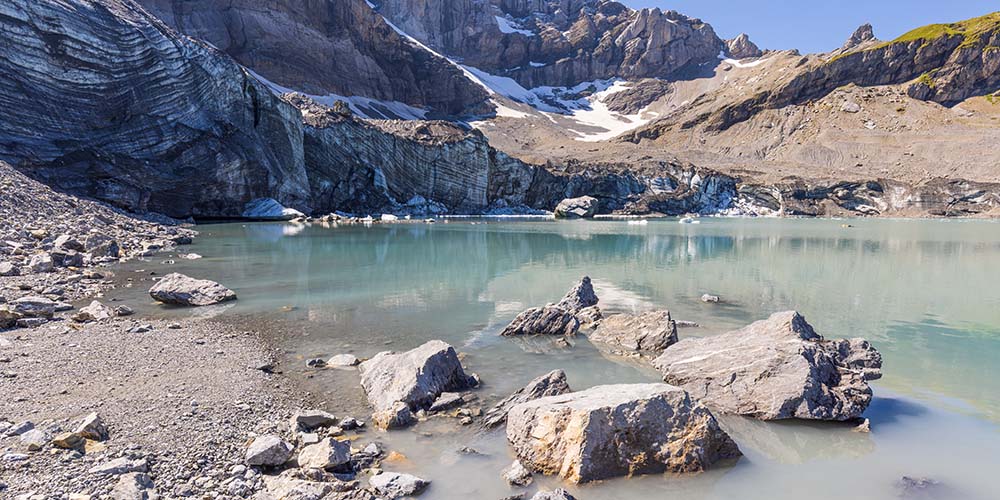 View across the lake from SE. Most of the calving took place roughly in the middle of the photo. | 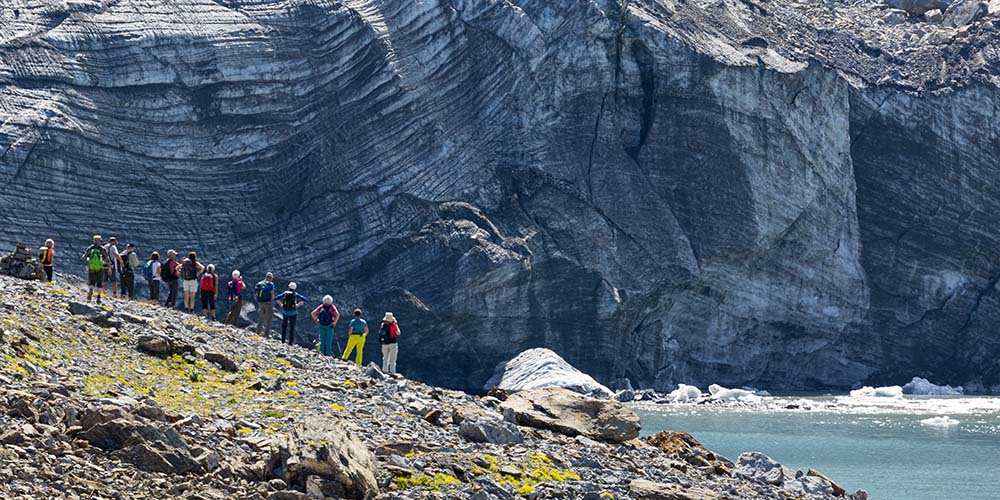 A group of hikers waits for the next calving event. | 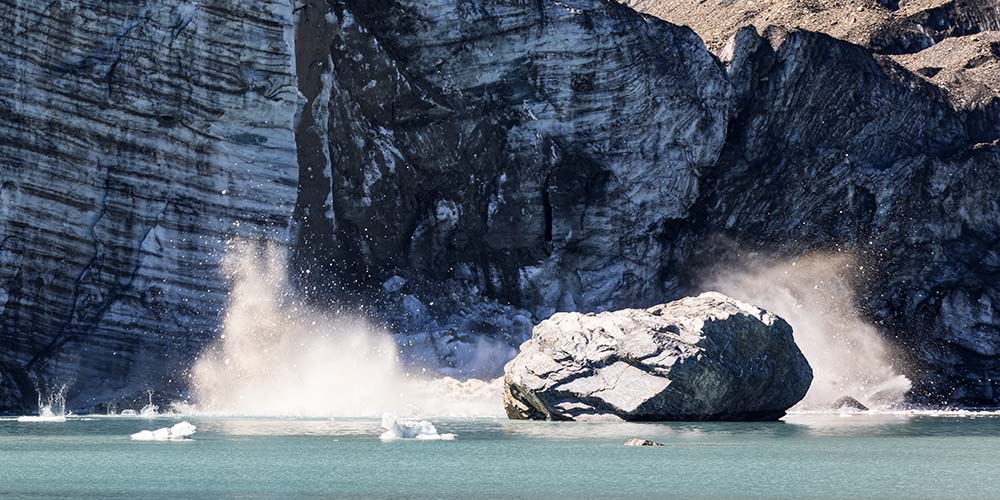 Minor calving; the large boulder has recently fallen into the lake. This boulder was still lying on the glacier surface in 2018. | 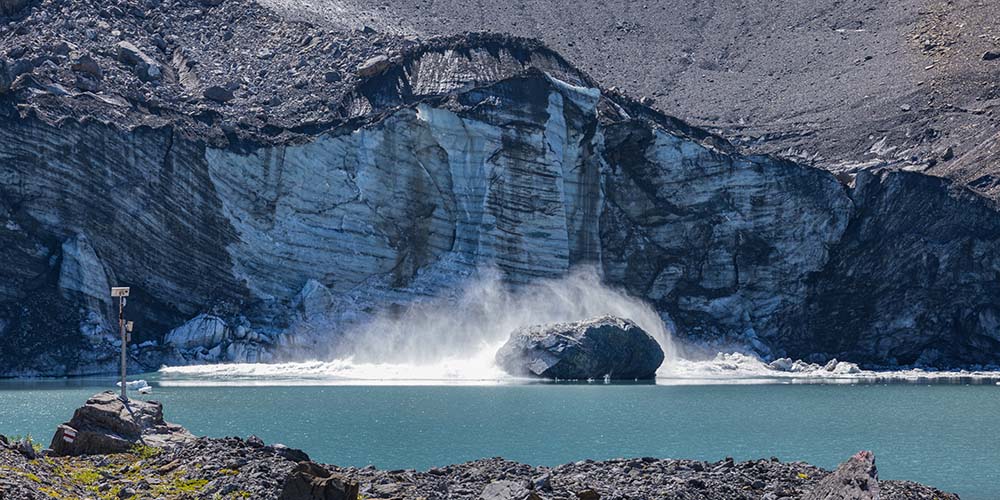 After a somewhat bigger calving event, a wave of considerable height spreads on the lake surface. |
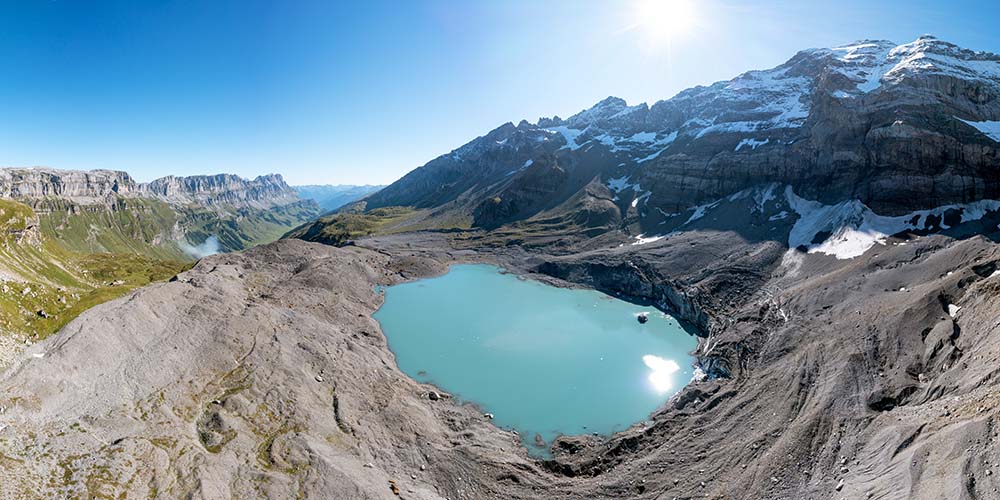 Drone panorama from West. In the left background is Urnerboden. | 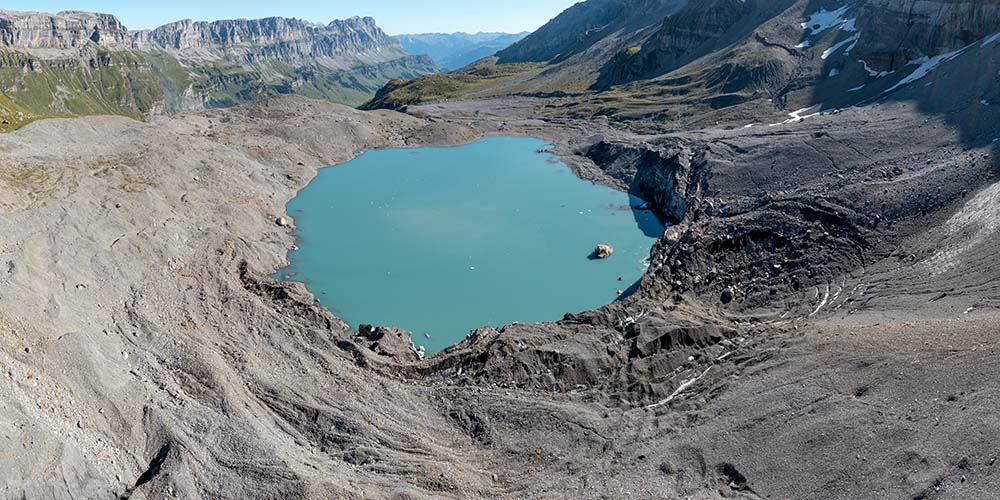 Drone panorama from WSW. Note concentric pattern of crevasses indicating subsidence of glacier surface on the right. | 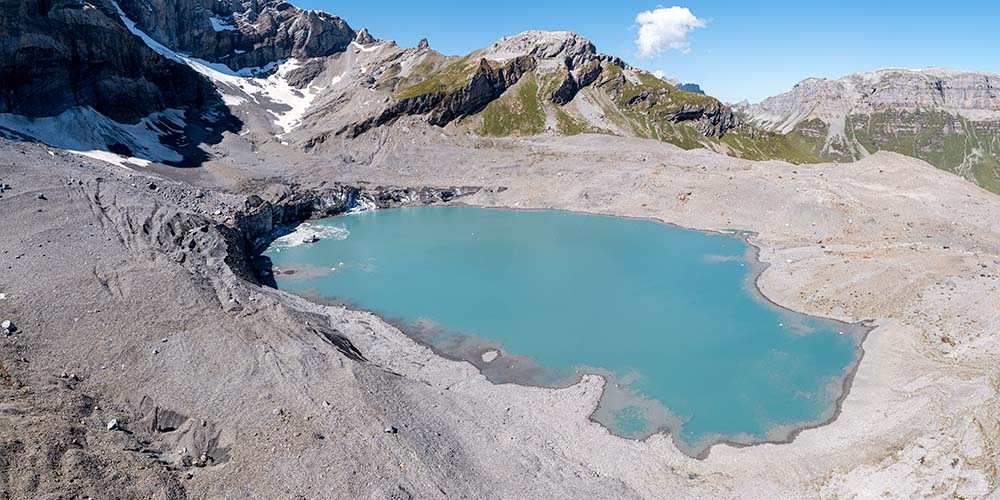 Drone panorama from East. Calving has caused a wave which, in turn has stirred up sediments along the shore. | 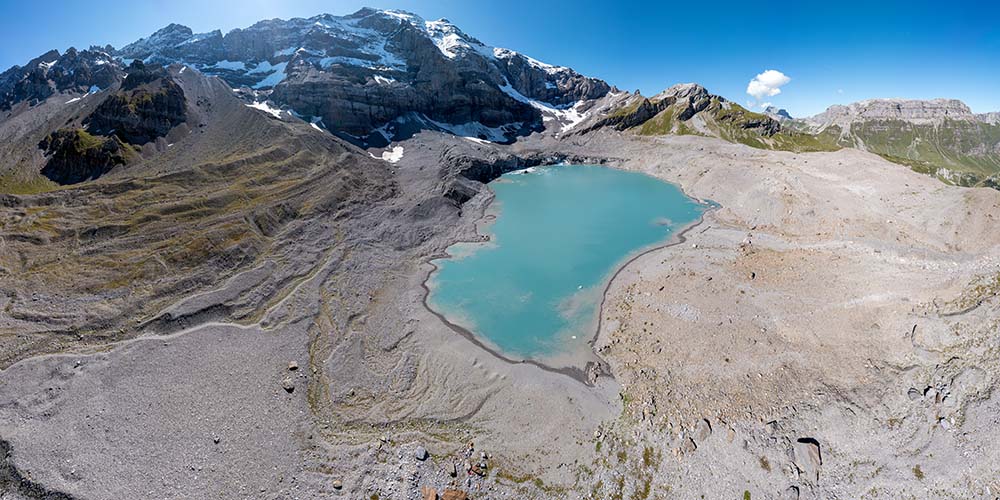 Drone panorama from ENE. A dark strip along the shoreline was caused by waves after calving. Left: series of lateral moraines, the uppermost one from the Little Ice Age. Foreground: meltwater channels, formed by run-off when the glacier filled the lake basin. |
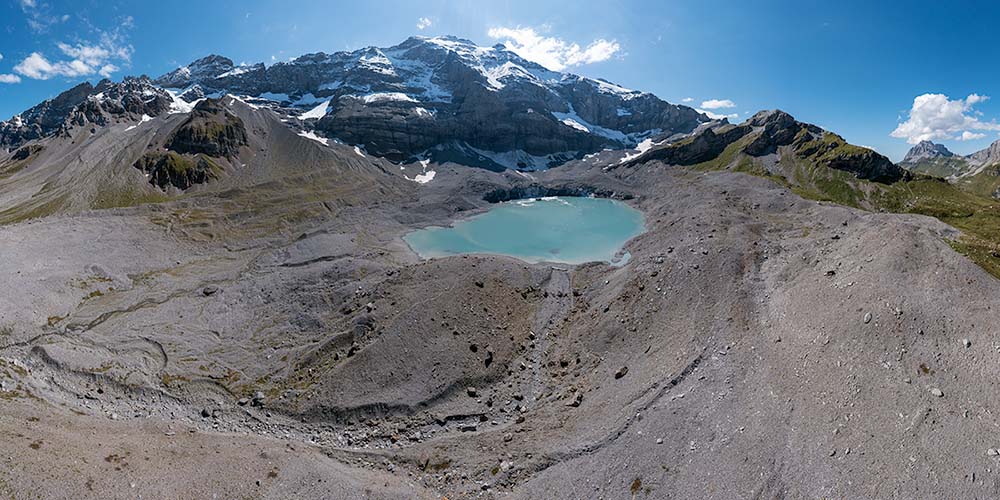 Drone panorama from NE. The lake usually drains through the channel that starts at the right-hand side of the lake, and is oriented towards the drone, However, at the time of the visit, the lake level was too low for any surface drainage to occur. | 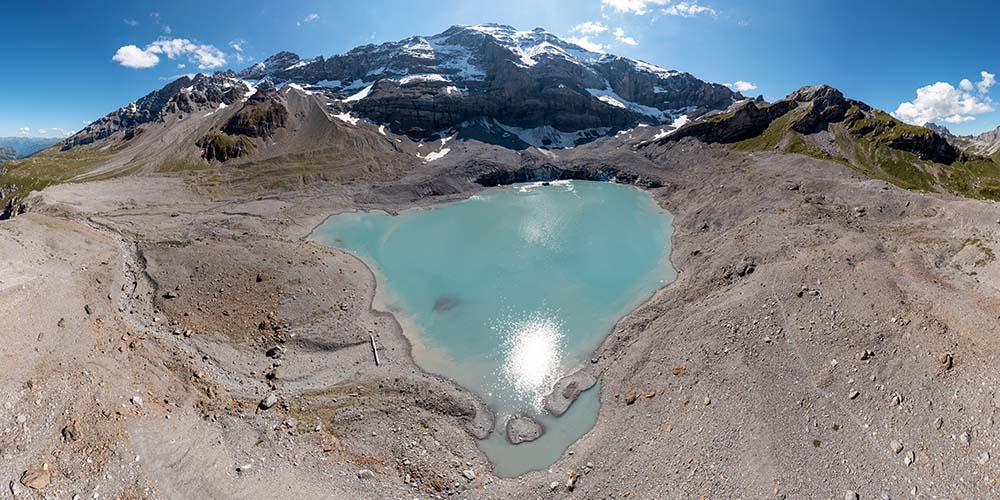 Drone panorama from NNE. Below centre left is a new bridge over the channel draining the lake. | 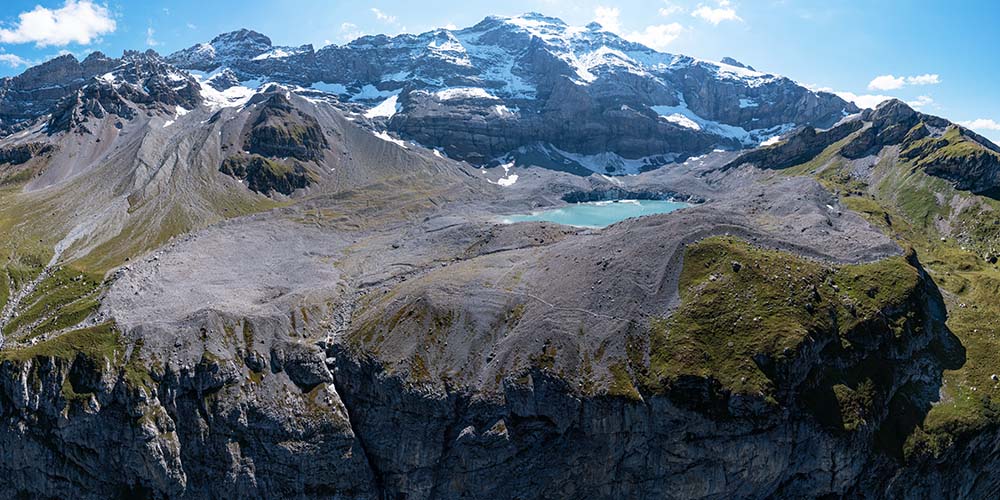 Drone panorama from a greater distance NNE of the lake. The moraine complex from the Little Ice Age covers almost the entire width of the image. | 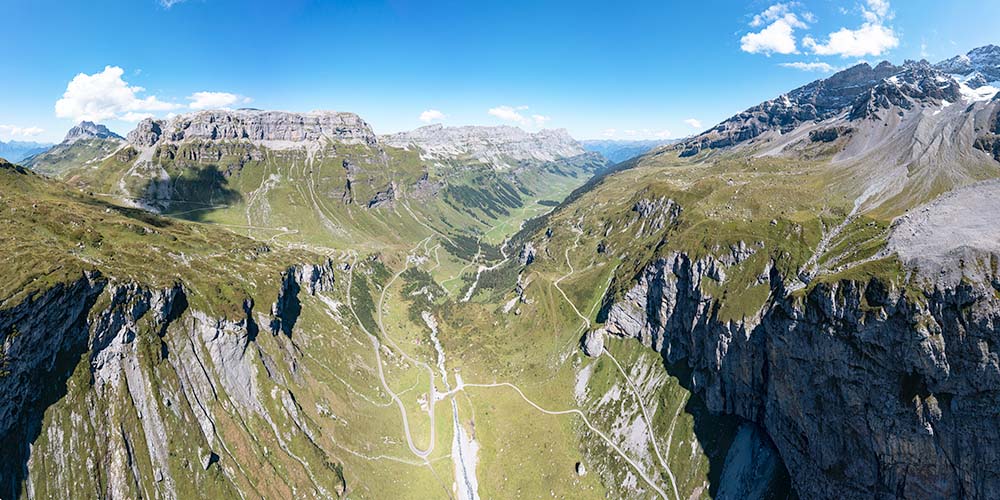 Drone panorama of Chlus, a prominent glacial trough at the southwestern end of Urnerboden. |